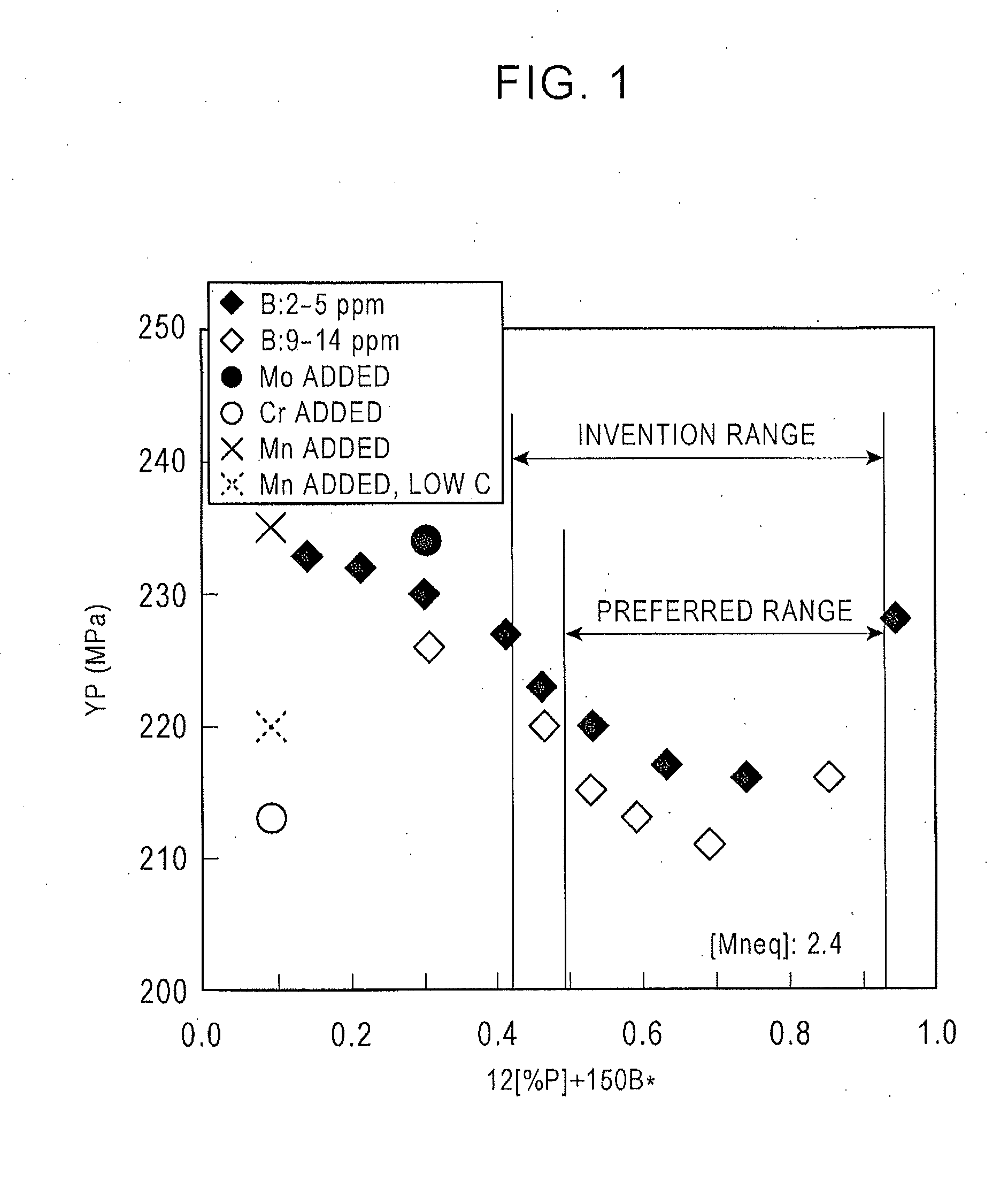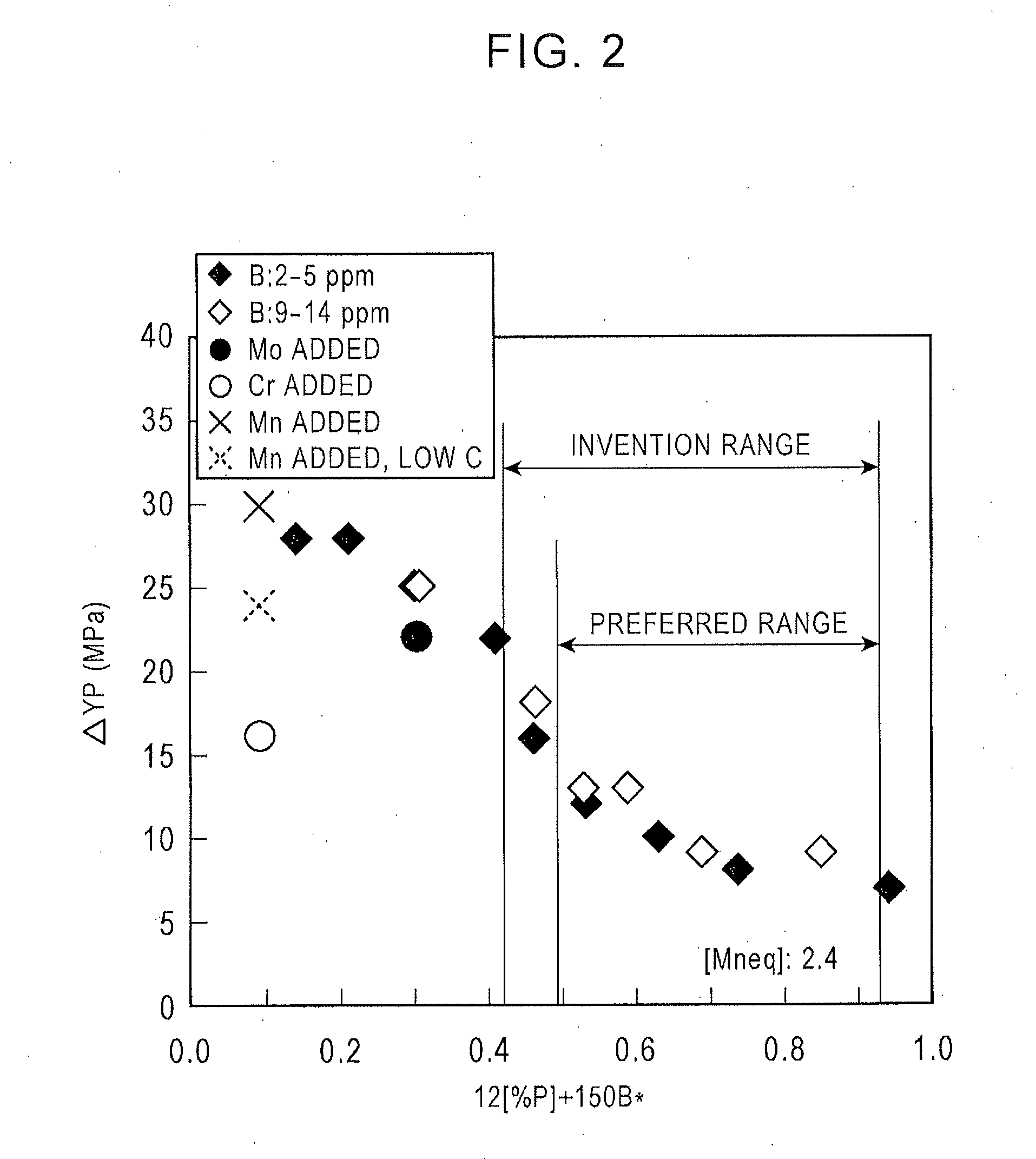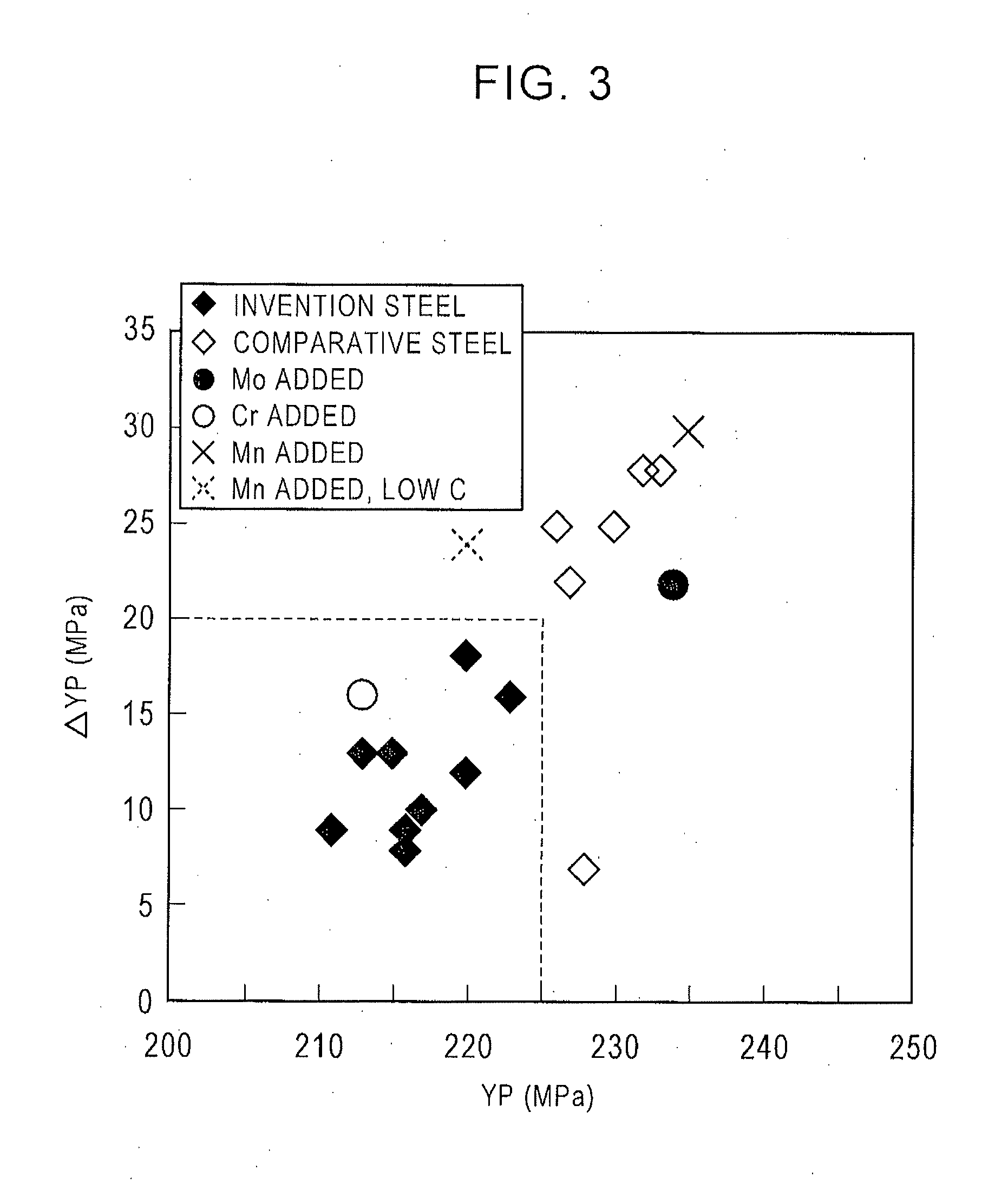High strength cold rolled steel sheet and method for manufacturing the same
a cold rolled steel sheet, high-tensile technology, applied in the direction of manufacturing tools, heat treatment equipment, furnaces, etc., can solve the problems of affecting the appearance quality of automobile surfaces, affecting the surface distortion resistance of press-formed products, and liable to surface distortion and breakage. , to achieve the effect of improving the corrosion resistan
- Summary
- Abstract
- Description
- Claims
- Application Information
AI Technical Summary
Benefits of technology
Problems solved by technology
Method used
Image
Examples
examples
[0153]The steels of the compositions shown in Tables 1 and 2 were prepared, continuously cast into slabs having a thickness of 230 mm, heated to 1,180° C. to 1,250° C., and hot-rolled at a finish rolling temperature of 820° C. to 900° C. The hot-rolled sheets were then cooled to 640° C. or lower at an average cooling rate of 20° C. / sec to 40° C. / sec and coiled at a coiling temperature CT of 400° C. to 630° C. The resulting hot-rolled sheets were cold-rolled to a rolling reduction of 68% to 78% to form cold-rolled sheets having a thickness of 0.8 mm.
[0154]The resulting cold-rolled sheets were heated in CAL such, that the average heating rate in the heating temperature range from 680° C. to 750° C. was 0.9° C. / sec to 15° C. / sec, annealed at the annealing temperature AT shown in Tables 3 and 4 for 40 seconds, subjected to first cooling from the annealing temperature AT to 480° C., second cooling from 480° C. to Tc, represented by formula (6) above, and third cooling from Tc to 200° C.,...
PUM
| Property | Measurement | Unit |
|---|---|---|
| Temperature | aaaaa | aaaaa |
| Temperature | aaaaa | aaaaa |
| Temperature | aaaaa | aaaaa |
Abstract
Description
Claims
Application Information
 Login to View More
Login to View More - R&D Engineer
- R&D Manager
- IP Professional
- Industry Leading Data Capabilities
- Powerful AI technology
- Patent DNA Extraction
Browse by: Latest US Patents, China's latest patents, Technical Efficacy Thesaurus, Application Domain, Technology Topic, Popular Technical Reports.
© 2024 PatSnap. All rights reserved.Legal|Privacy policy|Modern Slavery Act Transparency Statement|Sitemap|About US| Contact US: help@patsnap.com










